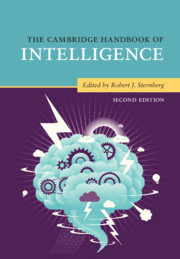Book contents
- The Cambridge Handbook of Intelligence
- The Cambridge Handbook of Intelligence
- Copyright page
- Dedication
- Contents
- Figures
- Tables
- Contributors
- Preface
- Part I Intelligence and Its Measurement
- Part II Development of Intelligence
- Part III Intelligence and Group Differences
- 11 Intellectual Disability
- 12 Prodigies and Savants
- 13 Intellectual Giftedness
- 14 Sex Differences in Intelligence
- 15 Racial and Ethnic Group Differences in Intelligence in the United States
- 16 Race and Intelligence
- Part IV Biology of Intelligence
- Part V Intelligence and Information Processing
- Part VI Kinds of Intelligence
- Part VII Intelligence and Its Role in Society
- Part VIII Intelligence and Allied Constructs
- Part IX Folk Conceptions of Intelligence
- Part X Conclusion
- Author Index
- Subject Index
- References
15 - Racial and Ethnic Group Differences in Intelligence in the United States
Multicultural Perspectives
from Part III - Intelligence and Group Differences
Published online by Cambridge University Press: 13 December 2019
- The Cambridge Handbook of Intelligence
- The Cambridge Handbook of Intelligence
- Copyright page
- Dedication
- Contents
- Figures
- Tables
- Contributors
- Preface
- Part I Intelligence and Its Measurement
- Part II Development of Intelligence
- Part III Intelligence and Group Differences
- 11 Intellectual Disability
- 12 Prodigies and Savants
- 13 Intellectual Giftedness
- 14 Sex Differences in Intelligence
- 15 Racial and Ethnic Group Differences in Intelligence in the United States
- 16 Race and Intelligence
- Part IV Biology of Intelligence
- Part V Intelligence and Information Processing
- Part VI Kinds of Intelligence
- Part VII Intelligence and Its Role in Society
- Part VIII Intelligence and Allied Constructs
- Part IX Folk Conceptions of Intelligence
- Part X Conclusion
- Author Index
- Subject Index
- References
Summary
This chapter addresses multicultural perspectives of intelligence in the United States. Topics include fairness in testing; environment, social location, and cultural context; measures of intelligence; and outcome implications in testing ethnocultural populations. Definitions of intelligence from a cultural perspective are highlighted. Contextual factors include: poverty, home environment, education, fluency in English, and acculturation. Testing constructs such as fairness in testing, test bias, cultural loading, and various forms of testing equivalence are discussed. Alternative assessment practices focus on nonverbal intelligence tests; dynamic assessment procedures; performance-based, authentic, and curriculum-based assessment; response to intervention, think aloud protocols, cross-battery assessment; and a multidimensional bilingual assessment model. Usage of mainstream intelligence tests is discussed in relation to Black, Asian, American Indian/Native American, and Hispanic and Latino/a communities. The numerous challenges, controversies, and complexities of interpreting test scores in cultural contexts are discussed as intelligence tests are transported, renormed, and restandardized globally.
- Type
- Chapter
- Information
- The Cambridge Handbook of Intelligence , pp. 346 - 372Publisher: Cambridge University PressPrint publication year: 2020
References
- 1
- Cited by

